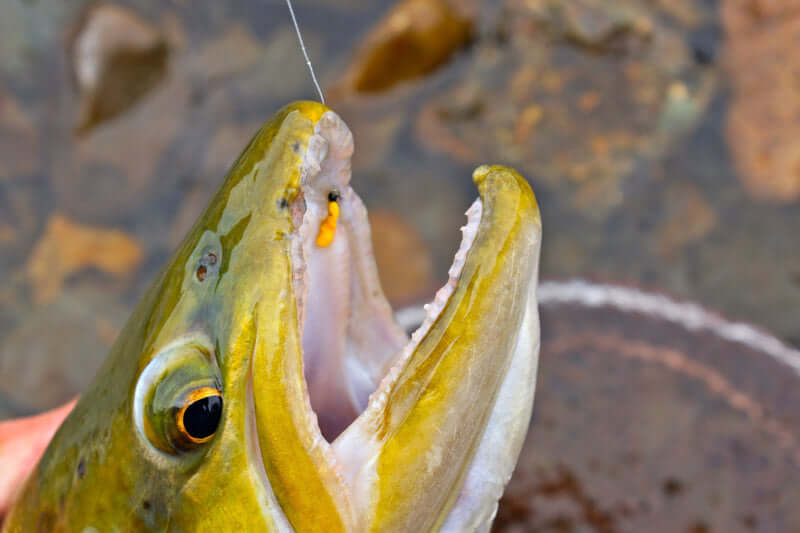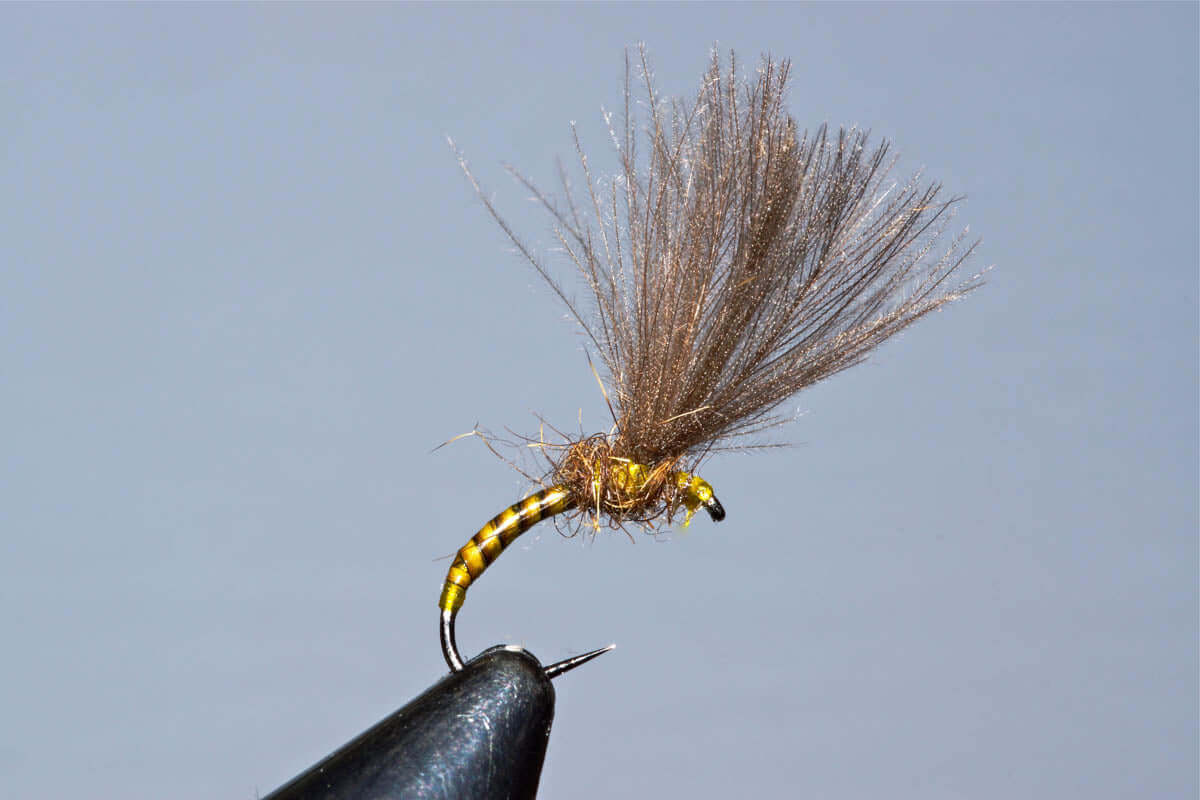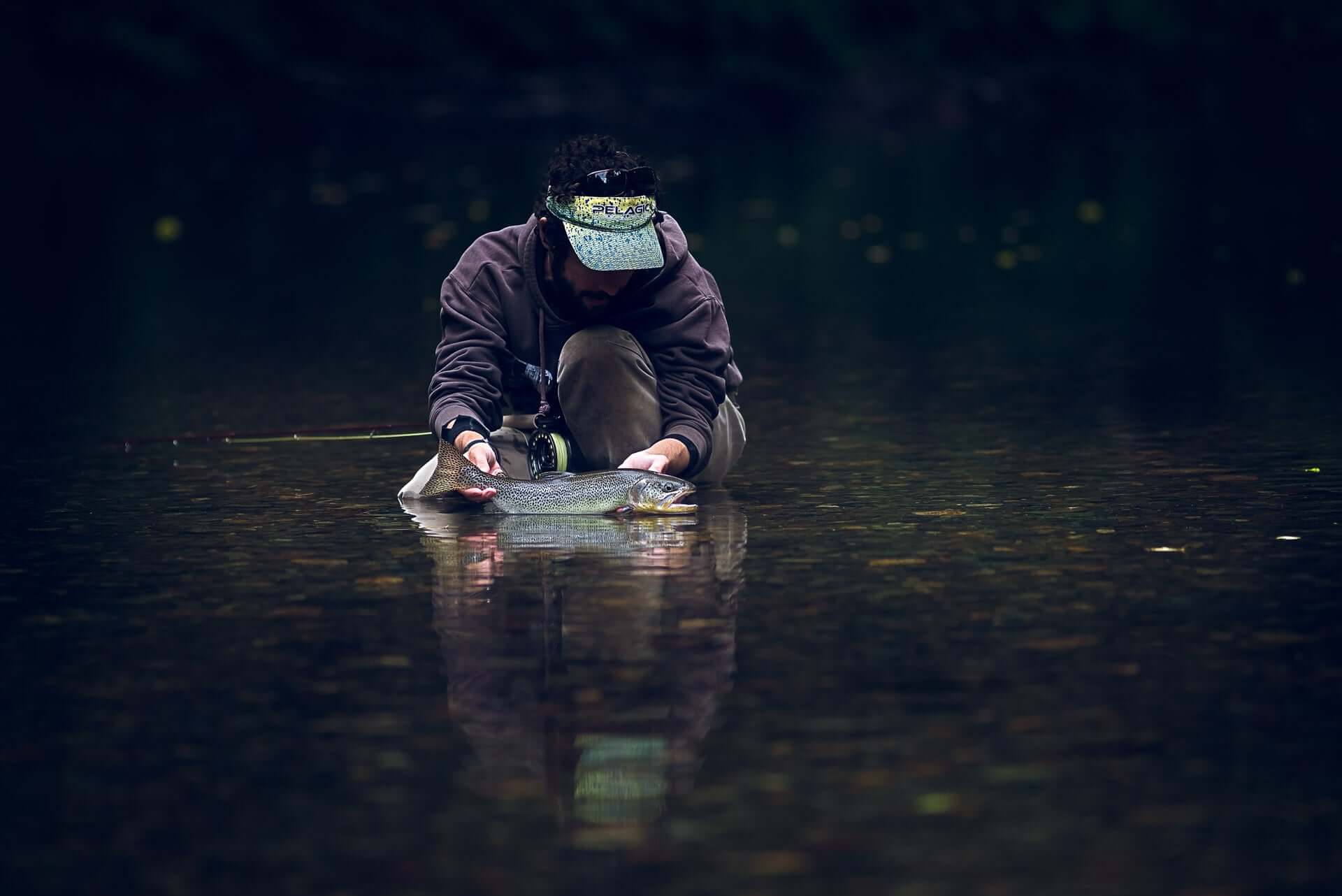by David Southall
If you’ve read my earlier Blogs you’ll know that my preferred method of fly fishing is with the dry fly. I love the visual aspect of the dry fly and the challenges of accurately casting to a rising fish and avoiding drag. However there are many times when trout and grayling are reticent about taking surface food and alternative tactics are needed in order to avoid a blank. If consistent success is to be achieved, as measured by fish caught, then versatility of tactics is the name of the game. Even when restricted to the dry fly by fishery rules the angler must be verastile with regard to fly choice, presentation and casting skills.
Let’s first consider casting skills for the dry fly angler. Whilst on many still waters much of the time all that is needed is the ability to perform a conventional Overhead Cast with when necessary accuracy, the river fly fisher needs to have a large repertoire of casts at his or her command in order to cope with the demands of casting underneath overhanging trees and avoiding/limiting drag caused by complex currents as well as pinpoint accuracy. To reach deep under low overhanging trees will require casts such as the Underhand Oval or Belgium Cast in which the rod is swept horizontally in an smooth, continuous arc like a tennis player sweeping up a low flying ball or the Italian Style Totally Under the Tip Cast, a Side Cast in which on the horizontal forward stroke the wrist is rotated anticlockwise during the final acceleration/thrust, followed by a drift in which the rod tip is raised to delay landing of the fly line. To avoid/delay drag Slack Line Casts such as the Wiggle Cast in which the rod tip is wiggled repeatedly side to side as spare line is shot during the forward cast, the Parachute Cast in which the forward cast is aimed high and the rod tip dropped sharply to ‘kill the cast’ resulting a crumpling of line and leader that generates a jumbled series of wiggles in line and leader when they land or the Italian Style Slowed Down Angular cast that dumps the long, 16’, leader in a heap whilst holding the fly line off the problem surface currents. Another vital drag-resisting cast when casting across the river with different flow speeds across the river is the Reach Cast in which the rod tip is swept to the right or the left as spare line is shot during the forward cast in order to generate an upstream or downstream curve to compensate for the different current speeds (upstream curve if the nearside flow is faster and downstream curve if the farbank water is faster). Then there are Roll Casts, Spey casts, Snake Roll casts and a host of others.
The river nymph angler also will need to have a repertoire of casts at hand, including Tuck/Dump Casts in which the tippet is landed vertically over the fly before the line has a chance to land to facilitate rapid sinking of weighted flies and Belgium or Oval Casts to avoid heavy nymphs impacting on the rod during the forward cast, plus the ability to cast a super-light French Leader or Micro-Nymph line.
Next we come to tactics. It is no good slavishly sticking to a method that isn’t working. I know that I tend to be guilty of this, sometimes sticking with the dry fly when alternative techniques such as nymphing would be far better. A good example was a few days before starting this Blog (June 2021). Two friends & I were fishing on a small North Yorkshire Moors stream on a very hot day (27 degrees C), in bright sun & with very low water. Brian & I stuck to the dry fly. targeting risers, whilst Kenny opted to fish an ultra-light French Nymph rig consisting of a level 0.18mm diameter leader, very short bicoloured indicator, fine tippet & a small nymph. Brian & I had to search extensive lengths of river to find the 24 risers that we landed whilst Kenny, fishing just a couple of pools caught 26 fish. A few days later I invited a friend to fish a short afternoon session on the lower beats of Driffield Beck chalk stream. I told him that the big wild fish would probably still be preoccupied with the spawning minnows but he is an even more avid dry fly man than I. As there were virtually no risers he opted to fish an Elk Hair Caddis, targeting any visible fish. Most ignored his offering & he ended catching 3 relatively small trout. I mainly fished with a small Martin’s Minnow streamer & many of the fish that had ignored my friend’s dry fly showed interest in the Minnow, chasing & nipping at it. I ended up landing a lovely wild trout of 2lb 15oz, plus 2 chub of between 2lb & 2lb 8oz on the streamer & a nice grayling of about 1lb 4oz on a size 20 Black & Red Perdigon nymph.
It pays to have a repertoir of tactics at hand to cope with a range of scenarios. When I visited the South Island of New Zealand in January a few years ago I hit a spell of very hot weather (30 degrees C plus) & low water. Much of the time the only fish activity was in the middle of the day when they were feasting on the tiny Willow Grubs that infest the overhanging willow trees. This made for challenging fishing as I first had to check out Google Earth on the internet to find areas of river with heavy willow growth & then had to effectively present size 18 to 20 imitations, not easy when 3x tippet was the minimum needed to have any chance of landing big brown trout amongst submerged willow branches & roots. I then had to tie a foam imitation that was a bit bigger than the real thing so I could use the triple-heavy grub hooks needed to cope with big fish. Finally I had to tie my imitation into a Rapala Loop Knot so they would move more naturally when attached to such strong/thick tippet. Even so I lost all of the biggest fish that I hooked.
When fishing the maelstrom of turbulent pocket water that is typical of most high alpine Austrian & Italian streams I opt for Tenkara gear with a light, 0.275mm diameter copolymer or fluorocarbon line no longer than the 13 to 14’ 6” rod plus 3’ of tippet & usually a size 10 Klinkhamer, size 10 Foam Beetle or size 12 long-shank Chernobyl Ant. This allows me to hold all the line & virtually all of the tippet off the complex currents, thus facilitating long, natural drifts of the fly & where necessary subtle twitches of the fly to induce a take from the brown trout, rainbow trout & brook trout.
When fishing for the highly educated rainbows, stocked wild brown trout & wild grayling during an emergence of tiny Midges I’ll fish with my 10’ 2 weight Sunray rod, 1 weight Sunray Jeremy Lucas line, & 12 to 15’ leader ending in 8x tippet & a size 26 to 30 CdC Midge or Wire Buzzer Pupa.
It is too easy to become narrow in one’s approach to fly fishing, relying on tried & tested methods & fly patterns rather than doing as Stuart Crofts recommends when he says “Let the river invite you in & let nature tell you what to do.”

- Italian Slowed Down Angular Cast

- Dump Cast

- Chalk stream trout caught on a small streamer

- New Zealand willow grubber

- New Zealand Willow Grub

- Fishing a big dry fly with Tenkara in an Austrian alpine stream pocket behind a boulder
































